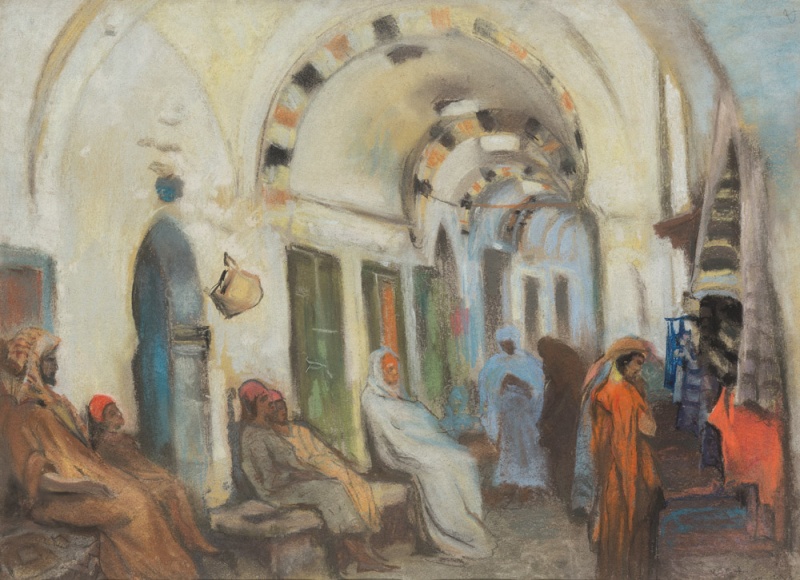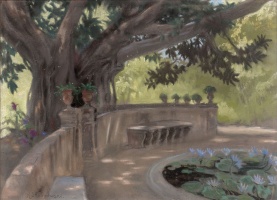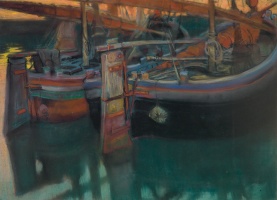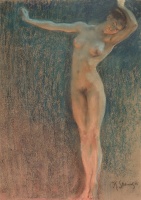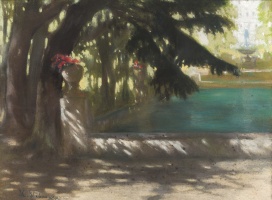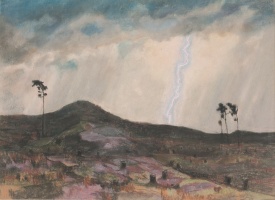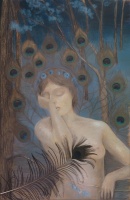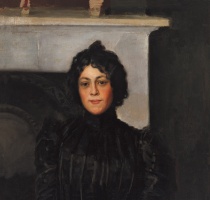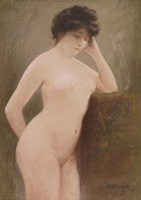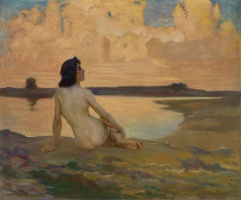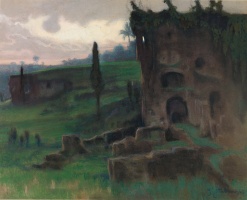The exotic Orient was a favourite theme with 19th-century Romantic painters. In Lithuania, the theme first appeared in the history paintings by Franciszek Smuglewicz and the imaginary scenes by Jan Rustem. Oriental motifs would occasionally emerge in the work of later artists. Kazimierz Stabrowski (1869–1929), a student at St Petersburg Academy of Art at the turn of the 19th century, set off for the east to collect material for his graduation work. In 1892, he visited Turkey, Greece and Egypt on his way to Palestine. In 1894, his painting Muhammad in the desert was awarded a gold medal in an exhibition at St Petersburg Academy of Art. In 1895, he showed sketchy ‘oriental types and images, mostly architectural’, executed in a broad and free manner, at an exhibition of work by students. In the early 20th century, Stabrowski travelled to different countries again, including Tunisia, several times. The works he painted in the Muslim holy town of Kairouan can be found in different collections. This important Tunisian town owes its reputation not only to its religious architecture, it also has a well preserved traditional Arab market. Judging by the style of the pastel drawings by Stabrowski, it is likely that he subsequently used his sketches from nature, creating compositions with considerably more detail and pure drawing. The pastel Covered market in Tunisia is a sketch. It shows a lightly and rapidly recorded scene, most likely done in the market at Kairouan. The artist conveyed the special mood of the colourful narrow streets of the covered market, with windows and arched doors opening into little shops and craftsmen’s workshops.
Text author Rūta Janonienė
Source: Law firm Valiunas Ellex art album
RES PUBLICA (2018). Compiler and author Rūta Janonienė
Expositions: “Kazimieras Stabrauskas – M. K. Čiurlionis teacher”,
24 September –
6 January
2015, National M. K. Čiurlionis Art Museum, Kaunas


